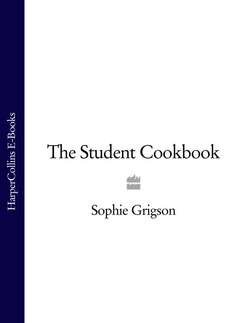Читать книгу The Student Cookbook - Sophie Grigson, Sophie Grigson - Страница 6
Techniques and General Tips How to Read a Recipe
ОглавлениеSkip this if you want to; I know it sounds superfluous. Any fool can read a recipe, but do they know how to interpret what they read? Mostly it is common sense, just a list of instructions that you should follow in the right order to end up with something enjoyable to eat. It is, however, worth noting that these instructions are nothing more than guidelines, not hard and fast rules inscribed in granite.
For instance, I cannot tell you exactly how long to cook a sauce or a gratin; your pans and dishes are unlikely to be exactly the same size or style as mine; your stove will not be the same as mine; and your idea of a medium heat will not be identical to mine. But, assuming that you and I concur roughly on these three parameters, my suggested cooking times will be roughly right. So, treat them as estimates. Use your own senses to judge when dishes are perfectly cooked – check the look, the smell (a waft of burning cheese is a dead giveaway that you’ve massacred your cheese on toast), the taste, the feel (with cakes this is essential), and even the sound – sizzling is the best indicator of the heat of fat, for instance. The more you cook, the easier this all becomes.
When you decide to cook a particular recipe, read it through carefully before you even write your shopping list. Do you have all the right equipment(no good tackling a gratin if you don’t have a suitable shallow ovenproof dish)? If not, it may be worth adding what you lack to your list. Do you understand the various cooking terms? If not, look them up in this book, or another reference book, or phone somebody who might be able to explain them to you. Don’t give up instantly if you are not quite clear – often something makes much more sense as you are preparing or cooking real ingredients, and it’s only by practising that you will become proficient. How long does it take to cook? Can you prepare some of it in advance?
It is worth noting that in a well-written recipe, the ingredients are usually listed in the order they are used. This can be useful when you are cooking. As a novice cook, it makes sense to measure and prepare all ingredients as described in the ingredients list before you actually start on the cooking proper. The exception to this is when one part of the recipe needs to be made in advance (you might need to marinate something for several hours before cooking and making the sauce), but if you’ve read your recipe carefully you’ll already be aware of this. As you gain experience and confidence you will know what has to be chopped or sliced initially, and what else can be done while the first batch of ingredients is sizzling away in the pan.
